 |   | |
| European Climate Adaptation Newsletter | Issue December 1, 2022 | |
EU policy and EEA activities | Climate and Health Observatory|Climate-ADAPT | Research and assessments | Transnational, national and local | Events | Subscribe | ||
| EU policies and EEA activities | |||
1. Members of the European Parliament say the European Union must urgently strengthen its climate action Members of the European Parliament (MEPs) adopted a resolution on increasing the European Union’s efforts to address climate change mitigation and adaptation in September 2022. MEPs want the Commission to propose a comprehensive, ambitious, and legally binding European climate adaptation framework, emphasizing the EU’s most vulnerable regions. In addition, MEPs urge the Commission to draw up an EU-wide climate risk assessment, while paying special attention to the risks of droughts, forest fires, and health threats. The EEA is the coordinator of the assessment work. The EU should also continue to play an active role in defining a global goal for adaptation and in ensuring the international community meets its international climate finance goal. << Read more | 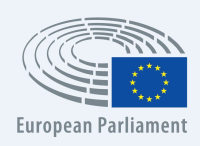 © European Parliament | ||
2. European Parliament supports local leaders’ call for a stronger role of cities and regions in global climate negotiations In October 2022, the European Parliament and the European Committee of the Regions joined forces ahead of the United Nations Climate Change Conference (COP27), calling on EU Member States to raise climate actions. The European Parliament’s COP27 resolution recognizes the urgent need for multi-level and cooperative action and involving local and regional authorities in the implementation of the Paris agreement. It also supports locally-led approaches towards adaptation and biodiversity protection, calls for mandatory adaptation and climate vulnerability tests at the local level and stresses the need for better channelling of financial resources to the local level. << Read more |  © UNFCCC COP27 | |
3. EU research contribution to the IPCC Working Group II on impacts, adaptation, and vulnerability: providing solutions, enabling resilient development The brochure on the “European Union research contribution to the Intergovernmental Panel on Climate Change (IPCC) working group II on impacts, adaptation and vulnerability: providing solutions, enabling resilient development” highlights the contribution of EU-funded projects to pushing the boundaries of world-class adaptation science as a key ingredient towards climate resilient development and justtransition for all. << Read more | 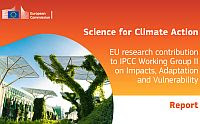 © Yuliia | |
4. More regions and local authorities join the EU Mission for Adaptation to Climate Change One hundred more regions and local authorities sign the Charter of the EU Mission for Adaptation to Climate Change in support of the goals of the European Green Deal and the EU Climate Adaptation Strategy. The total number of signatories to the Mission Charter stands at 215 from 24 Member States (September 2022) declaring their willingness to cooperate, mobilise resources and develop activities to reach their adaptation goals. << Read more
| 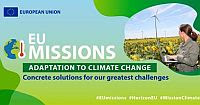 © European Commission | |
5. Green Deal going local handbook: Giving local and regional authorities guidance for the green transition The Committee of the Regions has published the "Green Deal going local handbook" to equip local and regional authorities with the right measures to deal with the hazards of climate change. It provides targeted guidance on financial aid and technical assistance in the field of adaptation. << Read more | 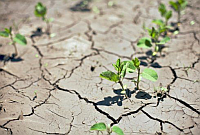 © Wageningen UR | |
6. Ten recommendations on how to better protect cultural heritage from the impact of climate change The European Commission has published the report on "Strengthening cultural heritage resilience for climate change". The information was gathered by the European Union Open Method of Coordination (OMC) group of EU Member States’ experts. The report provides a set of ten recommendations aiming at helping to strengthen cultural heritage resilience to climate change. << Read more |  © Fokke de Jong | |
7. 2022 European Aviation Environmental Report The aim of the 2022 European Aviation Environmental Report is to provide information on the environmental performance of the aviation sector at the European level. It also reports on policies and actions put in place to adapt to climate change and build resilience by integrating climate change considerations into planning processes and future investments in the aviation sector. << Read more |  © Fokke de Jong | |
| European Climate and Health Observatory | ||
8. EEA launches new report on climate and health EEA published its new report “Climate change as a threat to health and well-being in Europe: focus on heat and infectious diseases” providing evidence on those risks and solutions in policy and practic
<< Read more |  ©EEA | |
9. 2022 Europe report of the Lancet Countdown on health and climate change The 2022 Europe report of the “Lancet Countdown on health and climate change: towards a climate resilient future” was published. The report highlights the health effects of climate change and the health co-benefits of climate action << Read more | 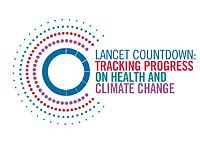 © The Lancet Countdown | |
10. Map viewer showing availability of urban green spaces to vulnerable groups The European Climate and Health Observatory now includes a map viewer visualizing the availability of urban green spaces to vulnerable groups. The map viewer allows users to explore the presence of green space and tree cover available in urban areas according to different age and socio-economic profiles as well as around schools and hospitals << Read more | 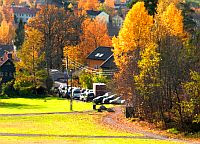 © Toni García, My City / EEA | |
11. Europe's heatwaves: How to keep buildings cool sustainably? The EEA briefing “Cooling buildings sustainably in Europe” analyses how to best alleviate heat stress in buildings. It also delves into the potential impacts on vulnerable groups, health, and inequalities, while decreasing energy use. Unless adaptation measures are taken, frequent heatwaves and increasing population vulnerability will substantially increase adverse health impacts in Europe. << Read more |  © Peter Löffler | |
12. ASPHER compiles resources for public health education on climate change The Climate-Health page of the Association of Schools for Public Health in the European Region (ASPHER) compiles activities and education resources on climate change and health for public health education. The resources aim to support the development of climate-health education and capacity-building for the public health workforce. << Read more |  © ASPHER | |
13. Protecting outdoor agricultural workers from extreme heat in Puglia, Southern Italy Exposure to increased temperatures creates uncomfortable or even dangerous working conditions that may reduce working hours and workers performance and increase the risk of injuries. For example, to protect workers’ health during recent heatwaves, the region of Puglia in Southern Italy prohibited outdoor agricultural work during the hottest hours of "high-risk" days. The definition of risky conditions resulted from a national initiative on the impact of thermal stress on workers’ health and productivity, i.e., WORKLIMATE. << Read more | 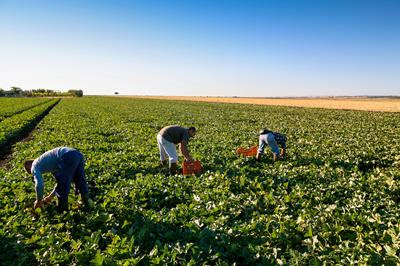 © Photo Beto, iStock | |
| Climate-ADAPT – new features | ||
14. Climate-ADAPT is now available in 5 national languages Climate-ADAPT now has five multilanguage sections (French, German, Italian, Polish and Spanish) based on automatic translation. Access to Climate-ADAPT knowledge in national languages contributes to one of the key actions of the EU Adaptation Strategy aiming to support more coherent and effective adaptation policies in Europe with a specific focus on supporting the regional and local levels. The multilanguage sections aim to provide easier access to Climate-ADAPT for users less capable of professional English. More language sections will be added at a later stage. The language sections can be selected via the top right menu bar. << Read more |  | |
15. New entry pages for adaptation in the urban and forestry sector The EU Adaptation Strategy strongly emphasises urban and forestry as key vulnerable sectors in Europe in which the implementation of adaptation to climate change needs boosting. The two new sections provide easy entry points into specific knowledge and resources on those two topics across Climate ADAPT, such as policy information, data, tools, adaptation options, and case studies. |  © Linda Söndergaard / Unsplash.com | |
16. EEA launches new report on climate and health The Transnational regions' section was updated to reflect the new spatial structure of the 2021-2027 EU Transnational Cooperation Programmes period, as well as all recent policy developments and project findings. << Read more | 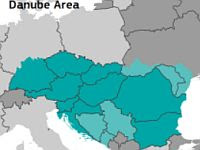 © EEA | |
17. New dashboard on Economic losses and fatalities from weather- and climate-related events in Europe This dashboard considers the total and insured economic losses and the number of fatalities from weather- and climate-related events in the EU Member States and the EEA member countries since 1980. It was prepared and made available under the EEA European Commission (RTD) Service Level Agreement on "Mainstreaming GEOSS Data Sharing and Management Principles in support of 'Europe's Environment". << Read more |  © Onur Doğman, Well with Nature / EEA | |
| Research and assessments | ||
18. UNEP Adaptation Gap Report 2022 United Nations Environment Program's Adaptation Gap Report 2022: “Too Little, Too Slow – Climate adaptation failure puts world at risk” finds that the world must urgently increase efforts to adapt to the impacts of climate change. The report looks at global progress in planning, financing and implementing 6 adaptation actions << Read more | 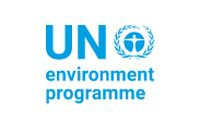 © UNEP | |
19. Designing climate resilient landscapes: State of the art projects in Europe The brochure, published as one contribution to the Czech Presidency of the European Union, brings together some of the best practice-oriented projects currently being implemented in Europe in the field of climate change adaptation. They cover a range of measures, from water retention in the landscape, to soil restoration, increasing forest resilience, and restoring ecosystem services. << Read more |  © EEA & Eionet | |
20. LIFE LUNGS: Towards a more climate resilient Lisbon urban green infrastructure The LIFE LUNGS project, co-financed by the EU and Municipality of Lisbon, aims to make the city more resilient to rising temperatures and adapt to the effects of heat waves and water scarcity. Actions need to be done in line with the municipality’s climate policies and the implementation of urban green infrastructure. A key measure is to increase tree coverage density along Lisbon's urban green infrastructure by planting 240,000 trees and shrubs in the green spaces of the city. << Read more |  © EU LIFE LUNGS project | |
21. 4-Year Open Climate Campaign for open access to research findings in climate science Creative Commons, SPARC, and Electronic Information for Libraries (EIFL), launched a 4-year Open Climate Campaign to make open sharing of research outputs the norm in climate science. The climate campaign will go beyond just sharing climate and biodiversity knowledge to expand the inclusive, just and equitable knowledge policies and practices that enable better sharing. << Read more | 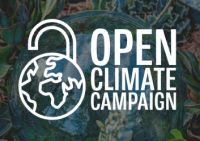 © CC BY 4.0 | |
| Transnational, national and local activities | ||
22. Climate Change Summit held with a focus on Central and Eastern Europe On 4-5 October 2022, the Climate Change Summit: "Boosting Solutions for the Futures by Taking Present Inspired Action" took place in Bucharest, Romania, focusing on Central and Eastern Europe. Social Innovations Solutions organised it as an interactive platform to connect decision-making, business, and civic representatives, mainly from the European Union, in debating and looking for feasible and sustainable solutions to climate change issues and policy, investment opportunities in the green economy and digital innovation. Furthermore, as one of the concrete outcomes of the event, a “Climate & Sustainability Business Index", a survey of 200+ business leaders, was launched. |  © Social Innovation Solutions | |
23. Nordic Perspectives on Transboundary Climate Risk - a policy brief of the Nordic Council of Ministers A policy brief and a study of the Nordic Council of Ministers' Nordic Perspectives on Transboundary Climate 'Risk' show how floods, forest fires, and other impacts cascade over borders, resulting in higher prices or disturbances in supplies of food commodities. The report recommends on how Nordic countries can better address those risks together. << Read more |  © v2osk / Unsplash.com | |
24. The Portugal National Roadmap for Adaptation 2100 project - Assessment of the vulnerability of the Portuguese territory to climate change in the 21st century The National Roadmap for Adaptation 2100 project - Assessment of the vulnerability of the Portuguese territory to climate change in the 21st century (RNA 2100), defines narratives of the evolution of vulnerabilities and impacts of climate change in Portugal. It also assesses the need for investment in adaptation and the socio economic costs of inaction. The RNA 2100 supports and responds to public policy actions to adapt to climate change at various levels of territorial intervention. Because it is also supported by initiatives to disseminate its results, including to the general public, the RNA 2100 has the ambition to become an important tool to raise awareness on climate change adaptation. << Read more | 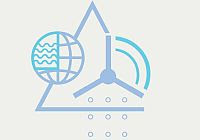 © Portuguese Environment Agency | |
25.European Urban Resilience Forum - Experts met in Athens to take action on climate change adaptation and urban resilience Cities and regions across Europe are working hard to foster resilience and adaptation and are eager to exchange knowledge and experiences. The 9th edition of the European Urban Resilience Forum (EURESFO) took place in Athens, Greece, from 14 to 15 September 2022, gathering city representatives, experts, and stakeholders working at the forefront of climate adaptation, urban resilience, and disaster risk management. Specific topics of the event covered nature-based solutions, data availability, and digital twinning – to take stock, address challenges that cities face, and outline opportunities for action. << Read more |  © AMS | |
26. Climate risk analysis and adaptation in companies To facilitate the implementation of the EU taxonomy for sustainable activities, the German Environmental Agency has developed the guidance "How to perform a robust climate risk and vulnerability assessment for EU Taxonomy reporting?". These recommendations describe how companies can practically proceed to meet the legal requirements to determine whether certain economic activities contribute significantly to European environmental goals, including climate protection and adaptation to climate change. << Read more |  © Johannes Plenio / Pexels.com | |
27. Interactive Climate Atlas for the North Rhine-Westphalia region in Germany launched The Environment Agency of the German federal state of North Rhine-Westphalia published an online Climate Atlas (Klimaatlas Nordrhein-Westfalen). It includes maps, interactive functionalities to browse and download data, as well as indicators on climate change and climate change impacts at the sub-national level. The publication of the online atlas supports the implementation of the Climate Adaptation Law in North Rhine-Westphalia << Read more | 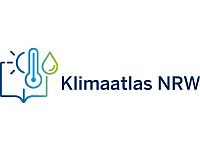 © LANUV | |
28. Climate change threatens the Norwegian food system Global crises will increasingly affect all parts of Norway's food system towards 2050, according to a report authored by the Norwegian Institute of Bioeconomy Research and published by the Norwegian Environment Agency in August 2022. The report, which examines how climate change nationally and globally impacts Norwegian food production and food value chains, finds that altered yields in Norway and climate change impacts in other countries will affect Norwegian food security. Although the country's food system is generally robust, the report considers government capacity, food security and health amongst low-income parts of society, and low consumer confidence to be especially vulnerable to climate change. Converging negative impacts of climate change and other crises might in extreme situations necessitate food rationing. << Read more | 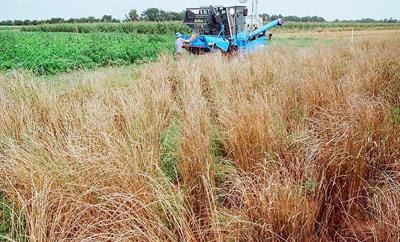 © Creative Commons/Lee R. DeHaan | |
29. Øresund Bridge now set to resist a 10,000-year storm surge In collaboration with several other ministries, agencies, and organisations, the Ministry of Environment of Denmark and the Environmental Protection Agency have published a new case study on the Øresund bridge. The Øresundsbro Consortium is protecting the four-kilometre-long tunnel against storm surges. When the current projects have been completed in 2025, the tunnel part of the Øresund link between Denmark and Sweden will be able to withstand a 10,000-year storm surge, projected up to 2050. The current infrastructure projects involve building new dikes and a concrete wall for flood protection. << Read more |  © Julian Hochgesang / Unsplash.com | |
| Events |
|




















